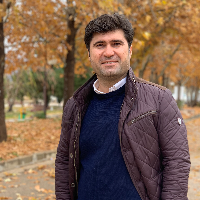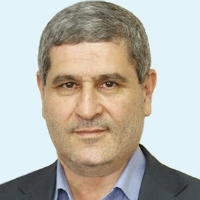Compilation of the sports model of citizenship in big cities of Iran: Social development approach
The purpose of this research was to compare and design the development model of citizenship sports in Iran's big cities with an interpretive structural modeling approach. The development of citizenship sports will greatly help to improve the quality of people's lives, the development of social relations, people's vitality and people's health. One of the ways to develop citizenship sports is to identify the effective factors and try to provide the basis for the realization of the factors to help increase people's participation in recreational and public sports. The results of the present research showed that there are 16 factors affecting the development of citizen sports in the big cities of Iran. If proper planning is done and deliberate decisions and actions are taken in order to realize these factors, citizen sports will be on the path of development. The authorities' attention and focus on the factors influencing the development of people's participation in physical activities and recreational sports and citizenship will lead to the increase of people's participation in public sports in big cities. But due to the limited abilities and capacities, it seems difficult to focus on all factors at the same time. It is obvious that the effect of the factors is not the same compared to each other. Some factors are highly effective and some are less effective. Factors that are more effective should be prioritized. The stratification of factors using interpretative structural modeling method allows managers to focus on factors that have more guidance and influence and are effective on the creation of other factors for the development of citizenship sports or play a facilitating role. they do. Therefore, leveling and setting priorities in decision-making and action will make the efforts to develop Iran's citizenship sports more quickly. Hence, in order to determine action and decision priorities, 16 identified factors were leveled using interpretive structural modeling technique.
descriptive and practical in terms of purpose. Data collection was done in the field and in a mixed qualitative and quantitative way. The statistical population consisted of 18 experts in the qualitative section and 70 experts in the quantitative section, including the managers and experts of the Office of Public Sports of the Ministry of Sports and Youth, the officials of the Federation and Board of Public Sports and physical education managers of the municipalities in the big cities of Iran. The data was collected by reviewing documents and experts' opinions and using the Delphi method, a researcher-made questionnaire containing 16 factors for the development of citizenship sports. The validity of the questionnaire was confirmed by 10 sports management professors of the university and its staff with Cronbach's alpha test (α = 0.86). In order to structure the factors and design the model, experts' opinions, frequency percentage and interpretive structural modeling technique were used.
The results showed that 16 effective factors identified on the development of citizenship sports were placed in 7 levels. The factors of perspective and macro management and comprehensive planning and management were placed at the basic level of the model.
In general, it is suggested that attention to citizenship sports should be included in the macro-directions of the government and the authorities should take the necessary measures to design and implement a comprehensive program for the development of citizenship sports. The institutionalization of recreational sports and the continuous development of citizen sports can be considered as an indicator to improve the level of social well-being. In fact, citizen sports have many social benefits, such as psychological benefits, such as enjoying leisure time and improving individual personality, as well as improving people's health and physical fitness, and finally improving the quality of life. The interpretive structural model provides a new insight and understanding of the relationships between factors and variables and shows a clear structure of a complex issue. In fact, by structuring and leveling the variables in interpretive structural modeling, action priorities for managers are determined and solves the concerns of managers in implementing priorities. In this research, by identifying the effective factors on the development of social participation in citizenship sports in the big cities of Iran, it made the managers more aware of the influencing factors and determined the structuring of the factors, the degree of influence and effectiveness of the factors. Based on the research results, comprehensive planning and management is placed at the lowest level of the interpretive structural model. Therefore, it is suggested that the physical training of the municipalities of the big cities take the necessary action regarding the design and implementation of the program and the accurate implementation of the executive calendar in line with the program of the Federation of Public Sports.
-
Developing a Model of the Relationship between Social Networks and Social Marketing in the Development of Sports for All in Iran
Fatemeh Haji *, , Seyed Nasrollah Sajadi
Journal of Sport Management Review, -
Compilation of the model of effective factors on improving the quality of Iranian football refereeing
Rouhollah Ershadi *, Seyed Nasrollah Sajjadi, , Hossein Rajabi Noush Abadi
Journal of Sport Management Review, -
Development of Professional Identity in Physical Education Teachers
Hossein Ansari, *, Hamid Ghasemi
Journal of Sports Psychology, -
Provide a Model for the Role of Sport in Students' Biological Health
Khalil Sheykhiani, Ahmad Torkfar *, Sayed Ehsan Amirhosseini, Ebrahim Khoshnam
,




